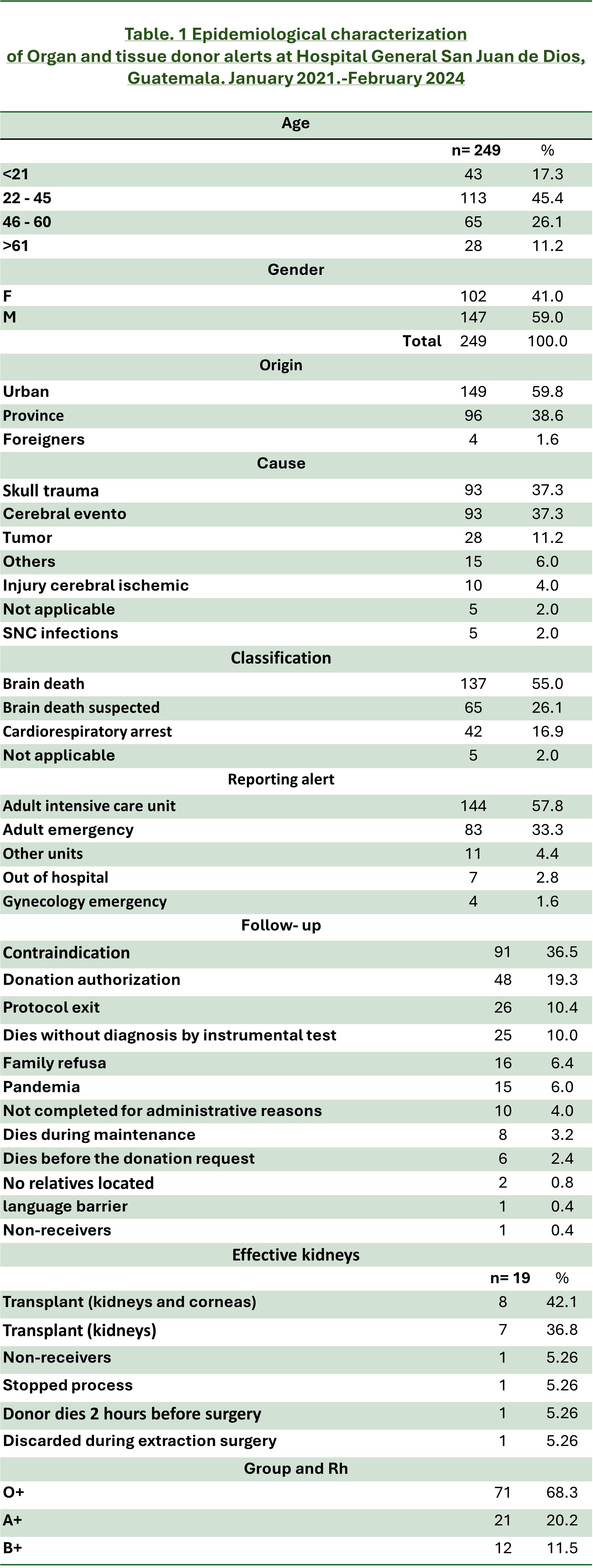
Epidemiological characterization of Organ and tissue donor alerts at Hospital General San Juan de Dios, Guatemala. January 2021.-February 2024
Cindy J Ixpancoc1, Rudolf Garcia-Gallont1.
1Unidad de donación de órganos y tejidos, Hospital General San Juan de Dios, Guatemala, Guatemala
Introduction: Organ donation in Guatemala is still an unknown act, however, the processes in the hospital have improved and are increasing due to the knowledge that doctors have acquired in the attention of donor alerts and brain death, especially in the critical care unit and emergency. Knowing the social demographic and clinical data of the donors will guide us to improve processes and create strategies to inform and raise awareness of the importance of the kidney donation and transplant program in the hospital.
Method: We present a descriptive, retrospective-transversal study of the donor alerts received from January 2021 to February 2024, that were evaluated and followed by our unit. This is a descriptive analysis of social demographic and clinical variables, from our database at the Organ and Tissue Donation Unit.
Results: We attended 249 Donor alerts, the majority for patients between 22 and 445 years, 60% of Guatemala citiy’s Urban area. Although 55% had clinical criteria for brain death, 26% arrested before this diagnosis could be certified with instrumental confirmation, as required by Guatemalan law. Sixteen percent (16%) did not accomplish brain death criteria, and 5% were discarded as donors because of improving neurological status.
The units of our hospital that generated most alerts, we are intensive care unit (58%), and Adult emergency department (33%). During follow-up of the evaluation, in 36% presented medical contraindications for donation. Family negative was found in only 6%, the most frequent reason being “hope for a miracle”. From the 20% of positive authorization for donation, 19 resulted as effective donors, with 42%, donating kidneys, and Corneas, 36% only kidneys, and 22% corneas only. Families that denied corneal explants, based their decision mainly on criticism in their communities.
Conclusion: Donor alerts increased in the evaluated period by 200% compared to previous years. Treating physicians improved their clinical diagnosis of brain, death, and we obtained 20% effective donation, with only 6% of familiar this accordance to donate. It is evident, that with the new position of a transplant coordinator in our Unit the number of effective donors and the complete donation process improved, although more support of Health Authorities to the coordinator and the process is still needed.

